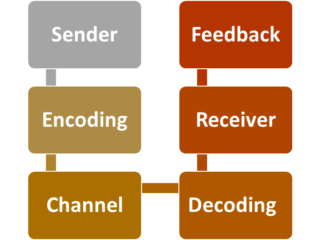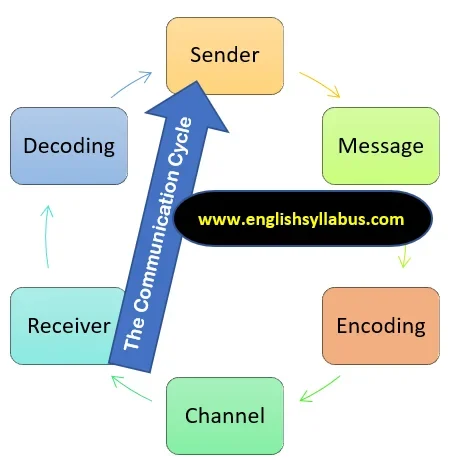The process of communication involves understanding and sharing the message. It is a process that starts with the sender and ends with the receiver. Communication is a two-way process, where the sender and receiver share information and feedback.
The sender is responsible for creating the message, which is then sent through a channel to the receiver. The receiver decodes the message and gives feedback to the sender. The feedback helps the sender to know whether the message was received and understood correctly.
So, the communication process is the way we exchange information, ideas, and emotions with others or between two or more people. Because people communicate to:
- Exchange Information, Ideas, Desires
- Establish and maintain Relationships
- Achieve common Goals and Needs
Communication involves the exchange of signals between people, which can be verbal, nonverbal, or a combination of both.
Fundamentals of Communication Process
The communication process is essential for both personal and professional relationships that involve 5 elements. These elements are sender, receiver, message, channel, and feedback.
- Sender
- Message
- Channel
- Receiver
- Feedback
The process of communication involves the following features:
| SR. | ELEMENTS | 5 COMMUNICATION PROCESSES |
|---|---|---|
| 1. | Sender | The sender is responsible for creating the message. |
| 2. | Message | The message is the information that is to be communicated. |
| 3. | Channel | The channel is the medium through which the message is sent. |
| 4. | Receiver | The receiver is the one who receives the message. |
| 5. | Feedback | Feedback is the response of the receiver to the sender. |
Communication Process Diagram
The Communication Process diagram is a great tool to help you better understand how communication works. By breaking down the process into its four main steps, you can see how communication happens and how we can improve it.

- The first step in the Communication Process diagram is sending a message. This is where you take your thoughts and put them into words. It’s important to be clear and concise when sending a message so that your listener can understand what you’re trying to say.
- The second step is encoding the message. This is where you translate your thoughts into words. It’s important to choose your words carefully so that your listener can understand what you’re trying to say.
- The third step is decoding the message. This is where your listener translates the words back into thoughts. It’s important to be patient and allow your listener time to decode the message.
- The fourth and final step is feedback. This is where you and your listener talk about the message that was sent.
The communication process can be divided into four steps:
- Sending
- Encoding
- Decoding
- Receiving
- Encoding is the process of translating the sender’s thoughts into a message. This can be done through spoken or written words, body language, or other means.
- Sending is the process of transmitting the encoded message to the receiver. So, this can be done through verbal or nonverbal communication, or through other means such as written communication.
- Receiving is the process of interpreting the message. This can be done through active listening, reading, or other means.
- Decoding is the process of translating the message back into thoughts or feelings.
Different Roles of Communication
In order to effectively communicate, we must first understand the different roles communication processes entail. But, the five common roles that people use to communicate are the following:
- Information Roles
- Psychological Roles
- Instrumental Roles
- Relational Roles
- Identity Roles
- Information Roles: In order to communicate effectively, we need to be able to understand the other person’s situation and what they want. We need to be able to gather information about the situation, the other person, and the context surrounding the communication.
- Psychological Roles: communication helps us to maintain our physical and psychological well-being. By communicating, like how much hungry you are, you’re communicating a psychological need.
- Instrumental Roles: communication helps us to achieve our short-term and long-term goals. Whatever those are, they are instruments and they’re instrumental to our lives.
- Relational Roles: In order to communicate effectively, we need to have a relationship with the other person. We need to trust them and have a sense of closeness or familiarity with them. We need to be able to share our emotions and thoughts with them. It helps us to understand our basic needs and expectations attached to our relations. When we maintain and develop relationships with others, we try to relate and get intimate with others by initiating conversation to build the relationship.
- Identity Roles: communication helps us to present ourselves in unique ways through our communication styles. All of these needs are being met by communication.

